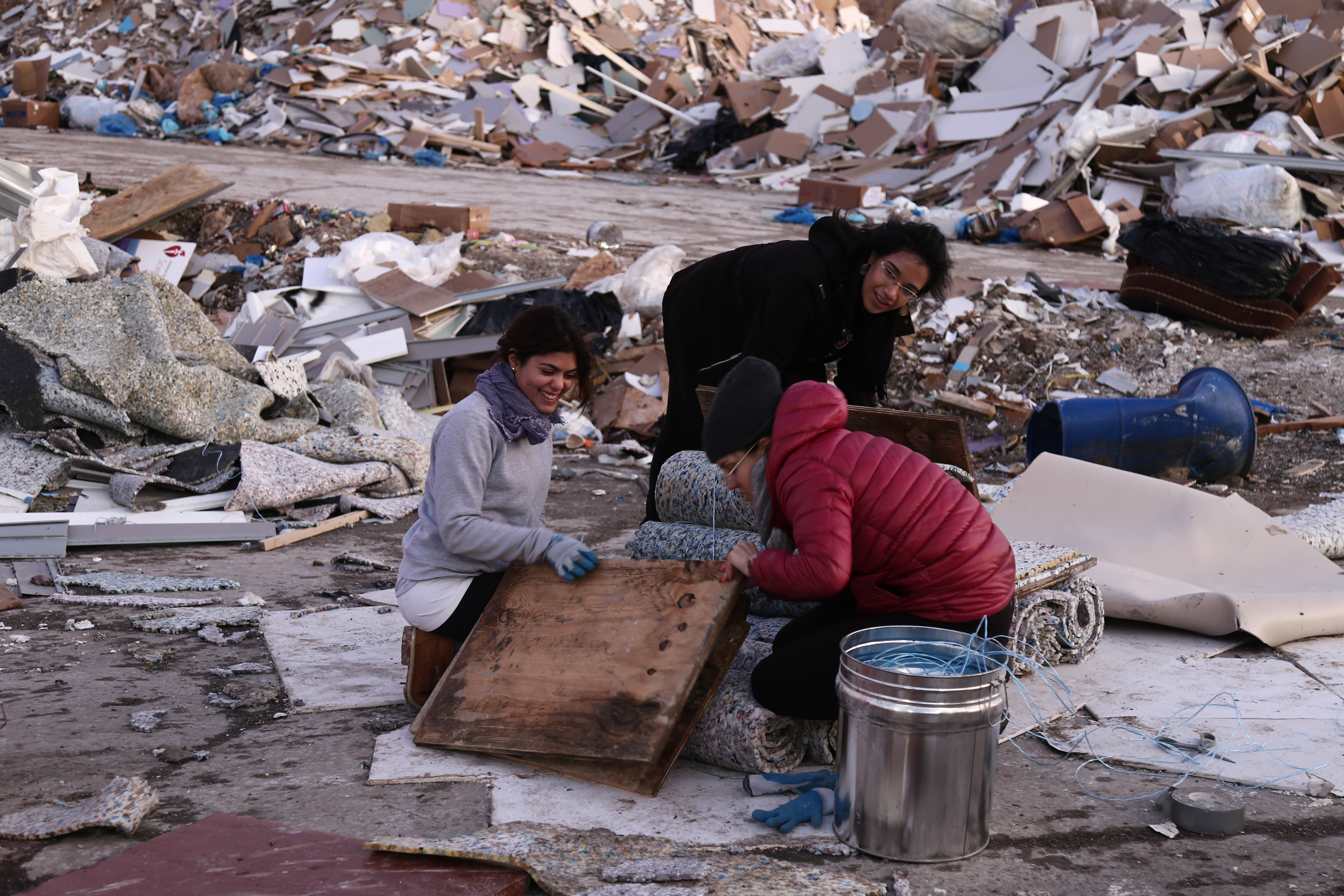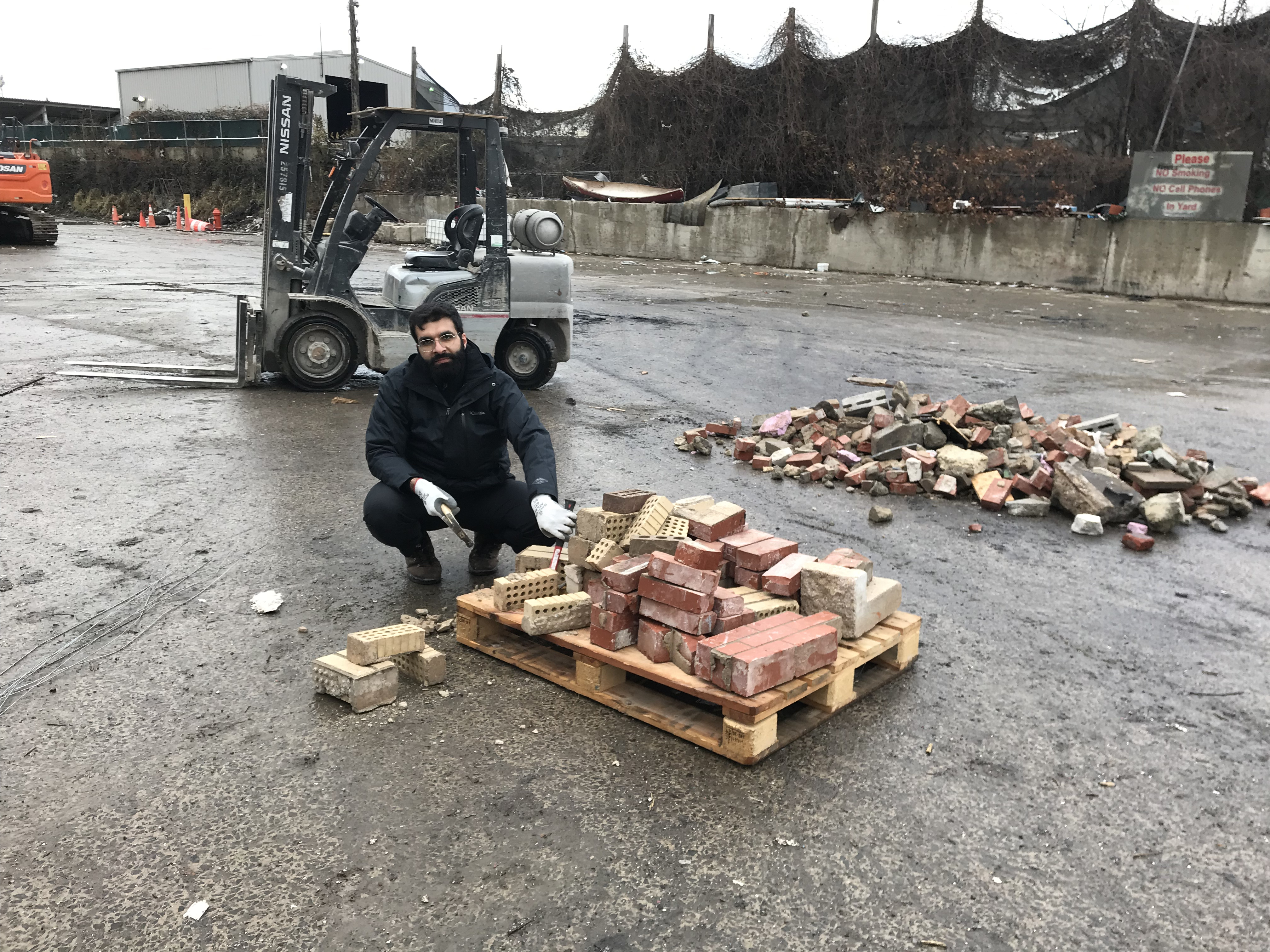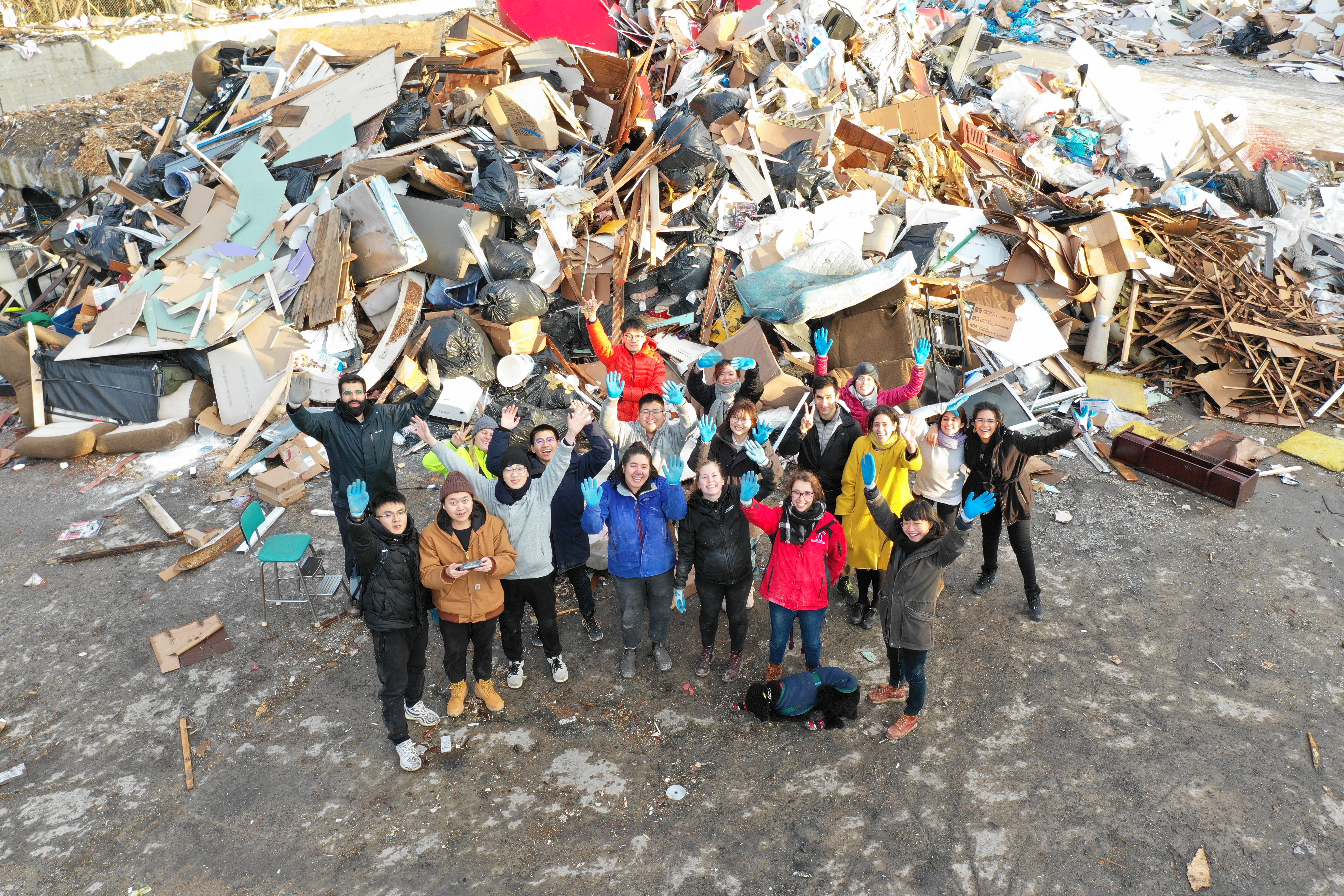As part of the School of Architecture master’s degree project studio entitled Alternate Endings: Architectural Maintenance Practices, a group of Northeastern graduate students recently attended a multi-day design workshop at a waste processing center in Philadelphia, as well as other site visits in New York. Led by Professor Ang Li, the studio investigates the maintenance practices and distribution networks of the deconstruction and building material reuse industries.
The goal of the class is to identify opportunities for speculative design thinking, through site visits – like these recent ones in Philadelphia and New York – interviews, and hands-on participation in the work of salvage yards and recycling centers.
“Hands-on exploration is at the heart of this course, with an emphasis on the dimension of fieldwork outside the classroom environment,” said Professor Li. “These site visits, as well as the studio generally, challenges students to ask: how do we intervene within the waste stream? Where do we see an opportunity to design something to get people to interact more with this kind of waste?”
The studio’s unique topic aligns with Professor Li’s latest research, which examines the hidden design opportunities that arise out of architectural obsolescence.
Throughout the semester, students are introduced to alternative approaches to architecture’s final act: from temporary programming for stalled sites to radical forms of preservation and reuse centered on material stewardship. While the work of architecture is often measured through tangible acts of construction, many questions remain, including how do we evaluate the subtractive work that goes into planning and executing a building’s demise? Architects are not just active players in the design and construction of a project, but also the maintenance, demolition, and material afterlives of buildings. From orchestrating the demolition sequence to sorting through the endless piles of raw materials that are left behind, there are a lot of unexplored angles to this often-ignored process.

Professor Li’s studio challenges students to research and address this important aspect of the architecture field.
While in Philadelphia, students were introduced to RAIR, short for Recycled Artist In Residency, is a non-profit arts organization uniquely located within a construction and demolition recycling center.

RAIR’s positioning allows its artists to work at the intersection of art, industry, and sustainability, facilitated by the artists’ direct engagement with the waste stream. Professor Li was an artist-in-residence at RAIR in 2019.
During this trip, the students also went to Freshkills Park, a former landfill that is now the largest park to be developed in New York City in over 100 years, and Sims Recycling Center in Brooklyn. In addition, throughout the year, students have been conducting their own trips in the Boston area, exploring everything from a reclaimed lumber yard to a metal scrap yard, to an architectural antique business, to a large-scale mixed materials recycling center.
Leading up to these site visits, the students in the class worked with CAMD Professor Meg Heckman, School of Journalism, to improve their interviewing skills for when they interact with the leaders and employees of these sites; these interview notes were used for their field guides.
“This side of architecture is important and valuable because it represents a different part of the building material life cycle” concluded Professor Li. “It challenges designers to view how we’re thinking and working with materials in a new and more cyclical way, considering where they come from and where they end up.”
We look forward to seeing the final projects these students create!


